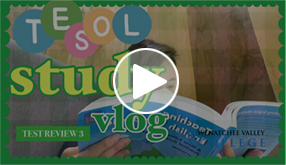온라인 테솔 WVC테솔 Unit 5~8 |
JIYEONG 2022-01-14 조회수 : 5,996 |
|
Unit 5. Classroom Management Learning Styles  Three times, three ways! 학생들마다 배우는 방식의 차이가 있으니 세 가지 방법으로 세 번 배운다는 점이 인상깊었다. 나의 경우 Kinesthetic 방법으로 배웠고, 때때로 두 가지 결합해서 배우기도 했던 것 같다. Warmers (Less than 10 mins!)  Pixar, Disney 등을 Warmer로 보통 사용하신다고 한다. 중요한 건 10분을 넘지 말아야 한다는 점! It's raining cats and dogs! -- 정말 고양이와 강아지가 하늘에서 떨어지는 것인가 상상해보게 한다 When the cat's away, the mice will play! Instructions  선생님이 model이 되어 instructions을 주기. 너무 틀에 박히지 않게, 간결하게, 단어를 조심해 가면서. Transitions (SMMMOOOOTTTHHH)  가장 기억에 남았던 건 SMOOTH하게 진행되어야 한다는 점. 어렵지만, 이 액티비티 끝내고 바로 다음 액티비티 들어가는 식의 진행은 금물. 두 액티비티를 자연스럽게 엮어 진행할 필요가 있겠다. Flexibility 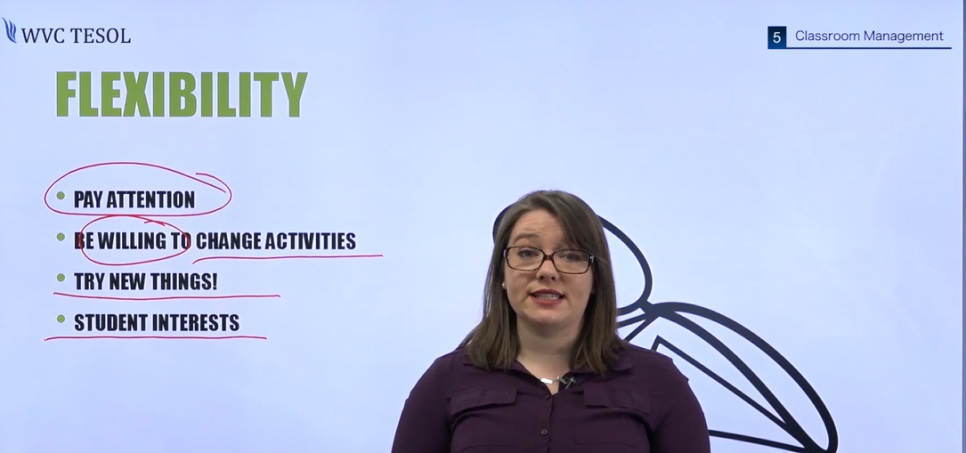 교실 상황에 따라 액티비티도 바꾸고, 새로운 것들을 시도하면서 학생들의 흥미를 돋우는 것이 필요하겠다. Grouping Students 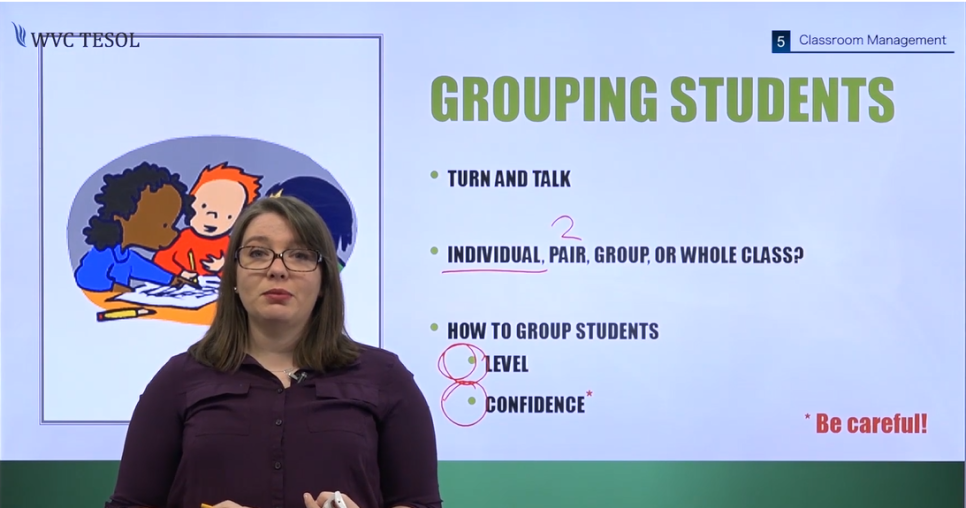 정말 까다롭지만 필요한 Grouping students! 두명씩 짝을 짓거나, 소그룹을 지을 수 있다. 그 때, 학생의 레벨과 자신감을 염두에 두며 그룹핑을 한다. High level student - Low level student의 조합도, 서로에게 배울 것이 있을 수 있으므로 바람직하다. 하지만 너무 highly confident한 학생끼리 모아두면 갈등이 생기거나, 다른 조원들이 소극적으로 변할 수 있으니 적절한 조합을 찾는 게 중요하겠다. (The Dreaded?..)Teacher Talk Time  선생님만 일방적으로 말하는 시대는 갔다. 비효율적이고, 학생들이 지루함을 느낄 수 있다. Summary 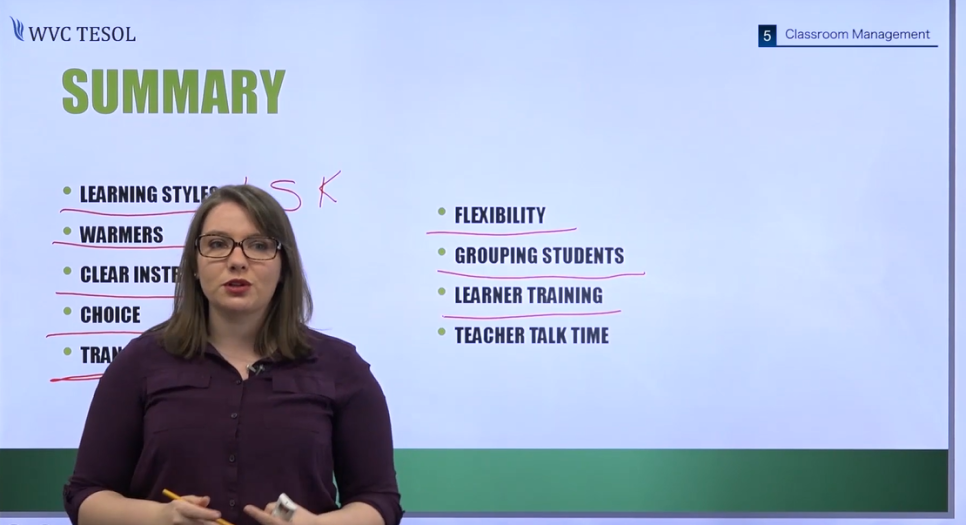 Unit 6. Assessment Assessment = Gathering Information 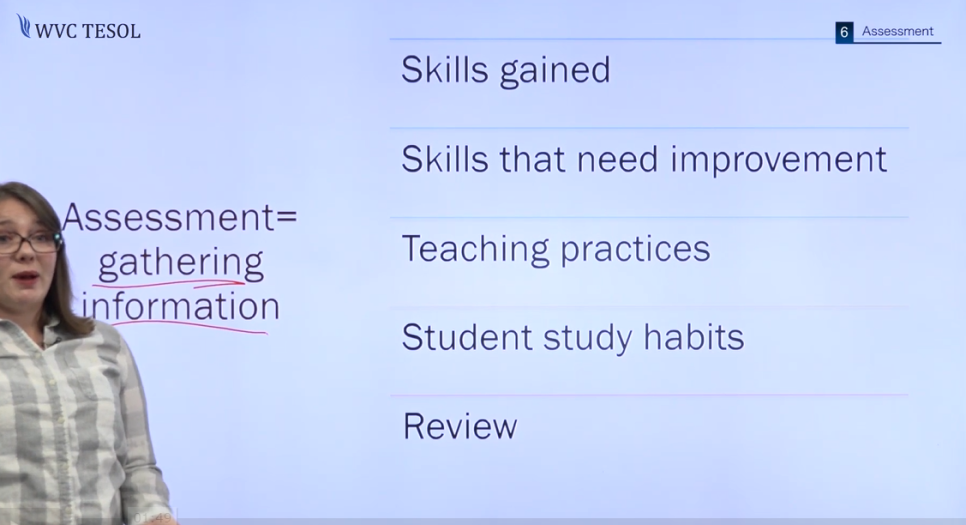 Assessment의 정의. Test보다는 브로드한 개념이고, 배웠던 것을 정리하는 개념이다. Types of Assessment 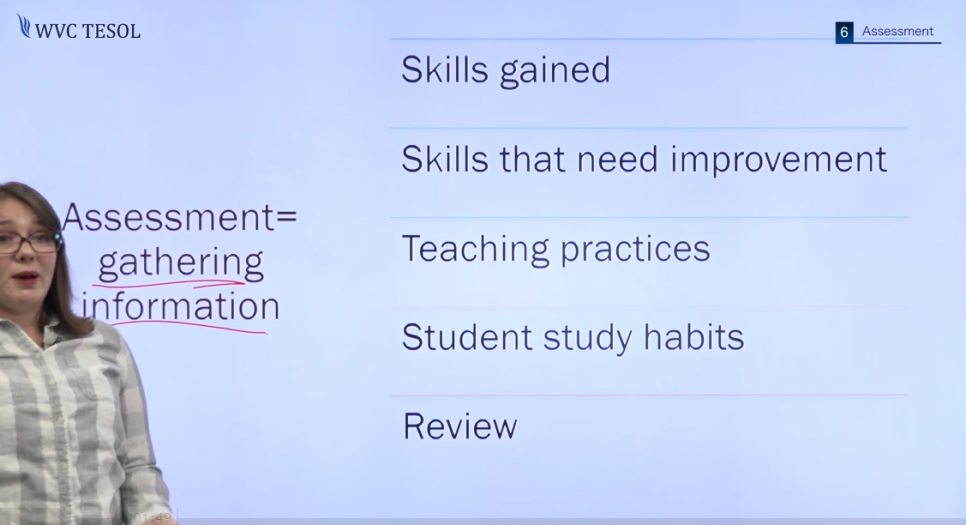 Summative Assessment: Tests & Quizzes, papers.. Formative Assessment: Practice, games, Exit Slips... Formative Assessment Tips & Tricks 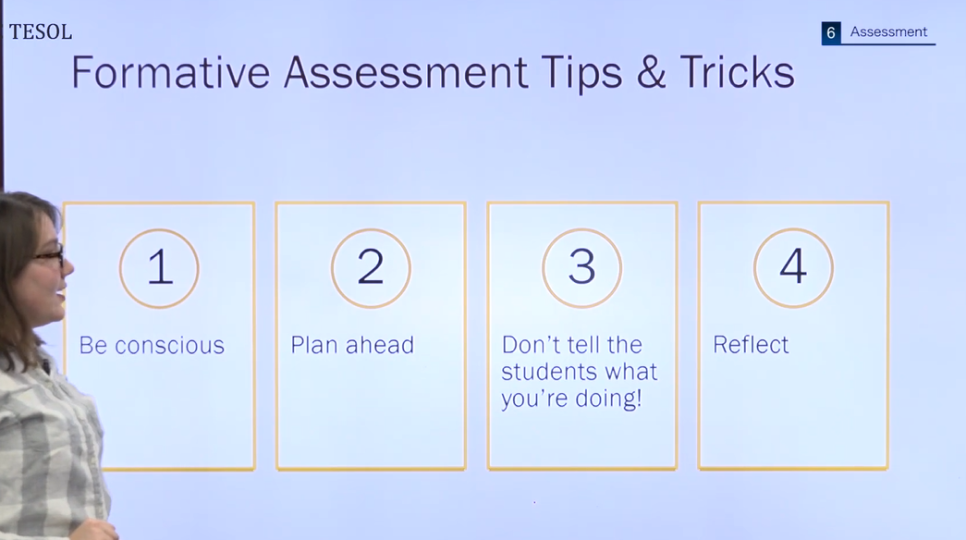 Don't tell the students what you are doing! 파트가 제일 중요한 것 같다. Placement Tests  Test하면 보통 떠오르는, 학교나 기관에서 시행하는 Test는 Placement Test. All four skills will be assessed. And strengths and weaknesses will be affecting level placement. 레벨에 따라 placement하는 테스트. Diagnostic Tests  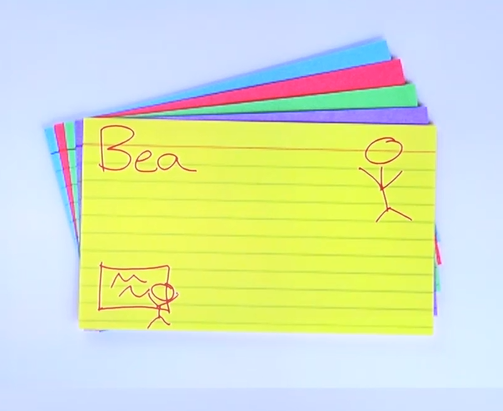 테스트라기보다 처음 클래스를 시작할 때 학생 카드처럼 인적사항을 써서 내는 형식. Proficiency Tests 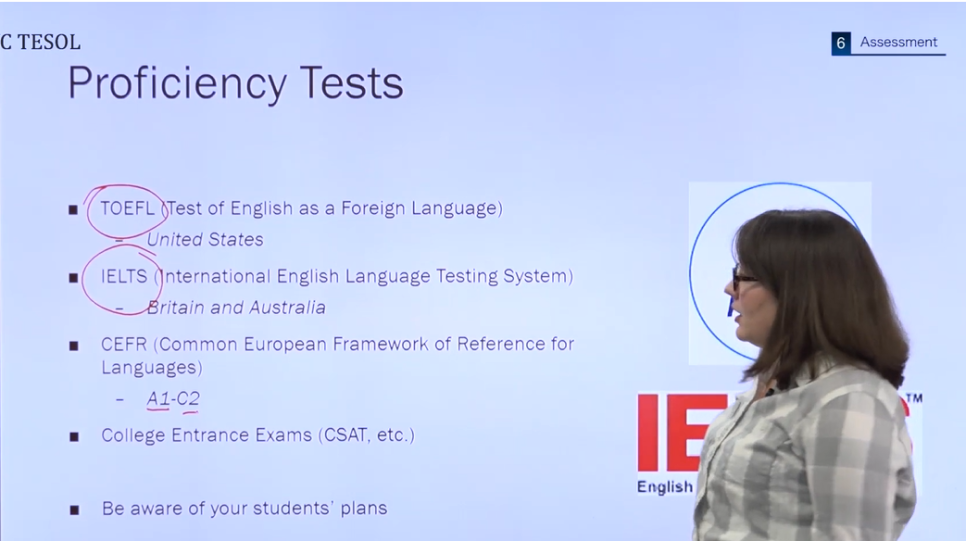 가장 흔히 볼 수 있는 형태의 테스트. 토익, 토플, 아이엘츠 등이 여기에 해당한다. Achievement Tests (Progress)  Progress Test와 Final Achievement Test의 차이점  테스트에 앞서 이렇게 꼼꼼하게 스트레스까지 매니징해주는 선생님을 만나는 학생들은 복받았다! Designing a Test  Cloze라는 방법이 눈에 띄었는데, 아래와 같이 본문 내용 중간중간 구멍을 뚫어 채워넣기 하는 형식이라고 한다.  그 밖에도 다양한 형식의 테스트가 있다. Errors (compared to mistakes)  Mistakes are AWESOME! Mistakes는 알면서도 실수한 것, Error는 틀린 것을 몰랐던 것. 둘 다 배움의 훌륭한 초석이 된다.  코렉션을 해줄때는 되도록 웃으면서 :) 지적이 아니라 충고로 느껴질 수 있도록 해야겠다. Summary  Unit 7. Course Design and Lesson Planning Designing your course  Backward Design: Results - Evidence - Plan Establishing Curricular Priorities  Project-Based Learning  시간이 좀 걸리지만, 4개 영역을 모두 창의적으로 쓸 수 있는 방법 Choosing a textbook 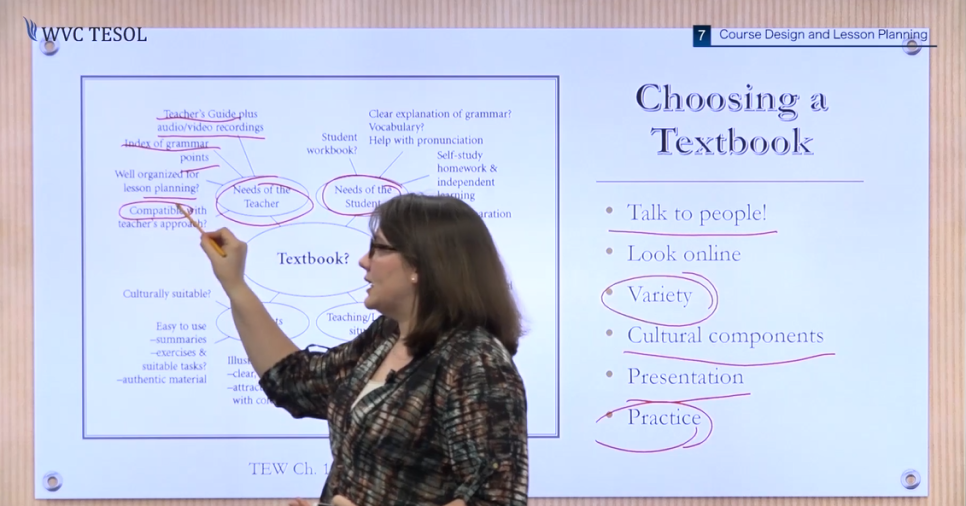 Textbook을 선택할 때 주의할 점이 상당히 많다! 아무래도 수업과 직접적인 연관이 있다보니 신중해야겠다.  No textbook is OK! 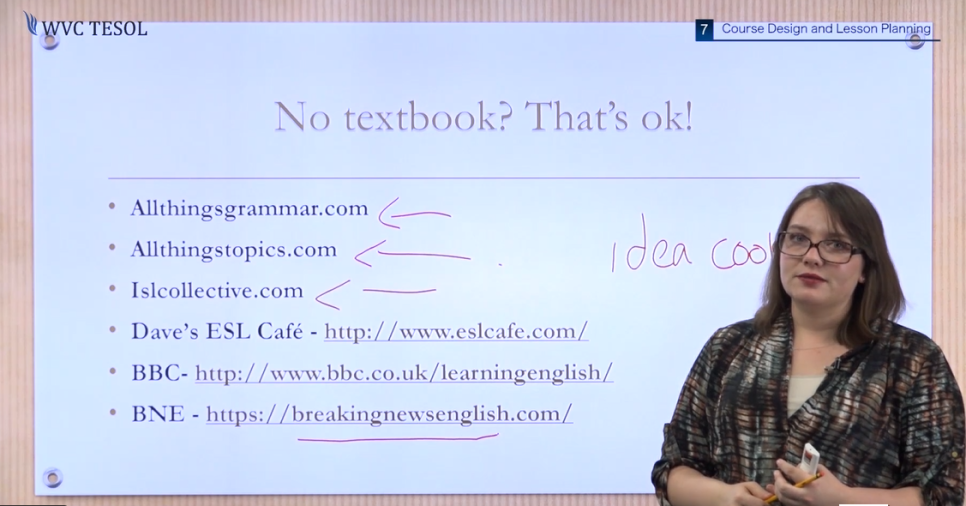 시대에 맞게, 너무 Textbook contents에 집착하기보다는 다양한 소스들을 이용해서 수업을 재미있게 이끌어나가는게 중요하겠다. BNE와 Dave's ESL Cafe에서의 Idea Cookbook 참고. Unit 8. Teaching Reading Reading in English  처음에는 번역으로 시작하겠지만, 자연스럽게 술술 읽히는 것이 목적이다. Reading은 pronunciation practice가 아니니, speaking 연습하듯이 소리내어 읽기보다 정독하며 내용을 이해하는 것이 우선이다. Reading Strategies 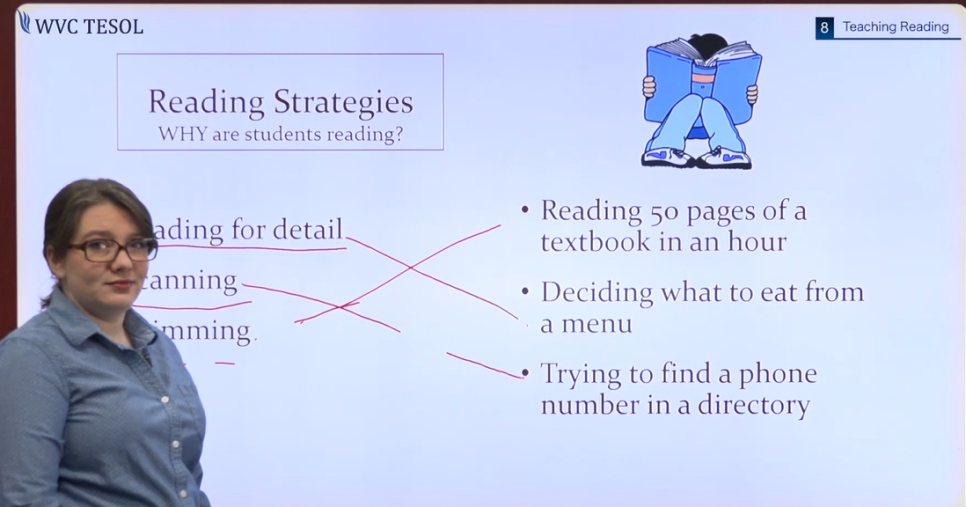 - Reading for detail: Deciding what to eat from a menu - Scanning: Trying to find a phone number in a directory (reading to find specific information) - Skimming: Reading 50 pages of a textbook in an hour (reading to get the main idea) *Reading for fun is kinda like skimming, but with more details. Intensive Reading  흥미 위주의 Extensive reading과 달리, 빡세고 알찬 reading 방법이다. *Discourse markers include the particles oh, well, now, then, you know, and I mean *Discourse connectives: so, because, and, but, and or.  Skim the article individually -> Read in small groups Follow-up Activities 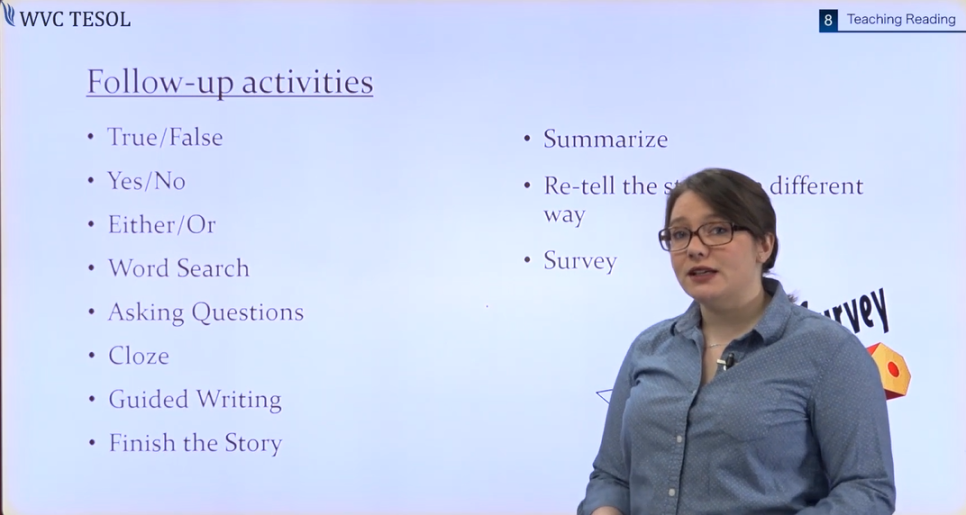 Intensive reading 후에는 내용을 정리하면서 이해를 도와주는 follow-up activity가 필수. Extensive Reading 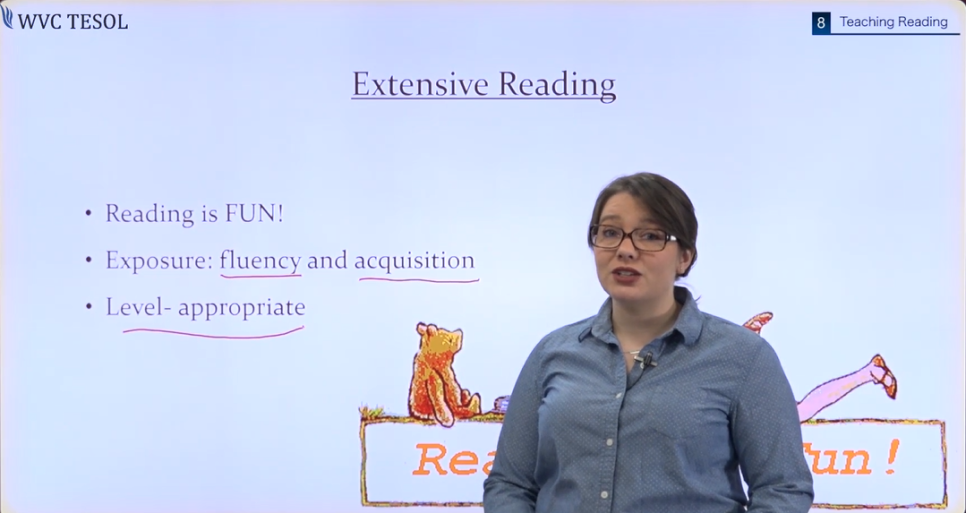 리딩이 재밌다는 걸 알게 해주는 리딩 방식. 그러므로 각 레벨에 합당한 책을 골라야 한다. Authentic vs. Created Readings  실제 리딩과 레벨별로 만들어진 리딩의 차이 For Graded Readers  많은 예시들을 전해주시는 점이 참 좋다. Reading & Speaking 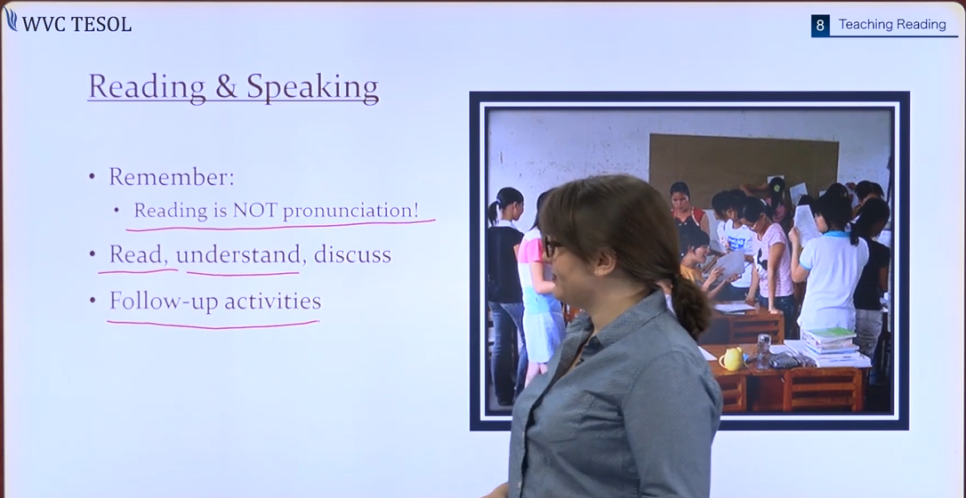 가장 중요한 것은 리딩이 발음 연습이 아니라는 점 Reading & Writing  Mad Libs는 다음과 같다.  Scaffolding activities는 다음과 같다. https://www.edutopia.org/blog/scaffolding-lessons-six-strategies-rebecca-alber Vocab in Context  - Denotation: Understanding the main idea - Connotation: Understaning any subtle ideas that might come with it (Means another word shouldn't be used) - Collocation: What words are usually used around that word? i.e. propositions - Register: Formality and informality of a lexical item / In what situation is this word used? Talking to a friend or to a boss? 한 수업 당 7-14개 정도의 Vocab이 딱 좋다. Summary 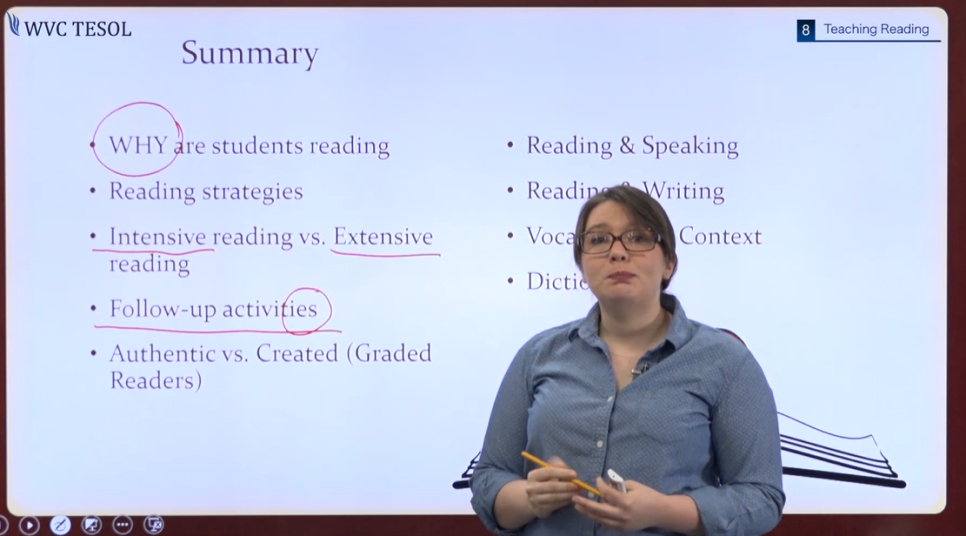 https://blog.naver.com/kittykiebear/222622017798 |
|
무엇이든 물어보세요?  |
접기
열기 







